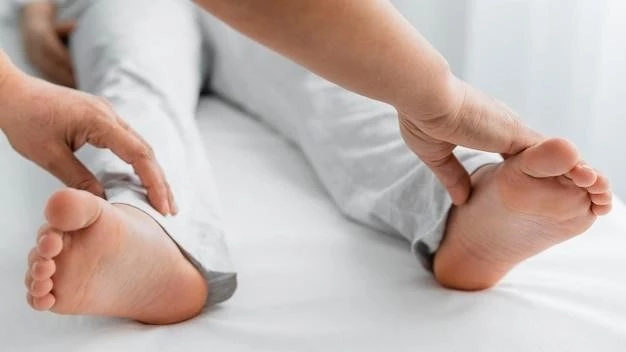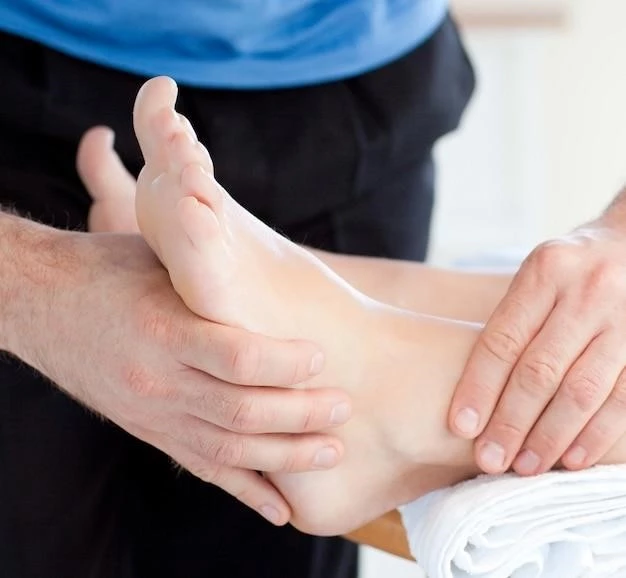Introduction to Split Hand Split Foot-Nystagmus Syndrome
Split Hand Split Foot-Nystagmus Syndrome, also known as KarschNeugebauer syndrome, is a rare genetic disorder characterized by limb malformations.
Split Hand Split Foot-Nystagmus Syndrome, also known as KarschNeugebauer syndrome, is a rare genetic disorder characterized by limb malformations. It is defined by the absence of central rays in the hands and feet, resulting in a split appearance. Additionally, individuals with this syndrome often present with congenital nystagmus and other eye abnormalities that are part of the condition’s unique characteristics.
Definition and Characteristics
Split Hand Split Foot-Nystagmus Syndrome, also known as KarschNeugebauer syndrome, is a rare genetic disorder characterized by limb malformations.
Inheritance Patterns
Split Hand Split Foot-Nystagmus Syndrome exhibits varied inheritance patterns, including autosomal dominant with incomplete penetrance. The genetic basis of the syndrome suggests both sporadic occurrences and familial transmission. Further research is ongoing to understand the complex inheritance mechanisms involved in this rare genetic disorder.
Genetic Mutations Associated
Research indicates that Split Hand Split Foot-Nystagmus Syndrome is linked to genetic mutations affecting limb development genes. These mutations result in the unique limb malformations seen in individuals with the syndrome. Understanding the specific genetic alterations involved can provide insights into the pathogenesis and potential targeted treatments for this rare condition.
Clinical Features of Split Hand Split Foot-Nystagmus Syndrome
Split Hand Split Foot-Nystagmus Syndrome presents unique limb malformations and distinct eye abnormalities, defining its clinical features.
Limb Malformations
Split Hand Split Foot-Nystagmus Syndrome presents unique limb malformations, such as ectrodactyly causing a claw-like appearance and webbing of fingers and toes, along with the absence of central rays in the hands and feet.
Eye Abnormalities
Split Hand Split Foot-Nystagmus Syndrome is associated with distinctive eye abnormalities, including congenital nystagmus and other ocular issues, contributing to the syndrome’s clinical presentation.

Diagnosis and Screening
Diagnosing Split Hand Split Foot-Nystagmus Syndrome involves recognizing the unique limb malformations and eye abnormalities to confirm the presence of the condition.
Physical Examination Findings
Physical examination to diagnose Split Hand Split Foot-Nystagmus Syndrome involves identifying the unique limb malformations and eye abnormalities characteristic of the condition.
Genetic Testing Approaches
Genetic testing for Split Hand Split Foot-Nystagmus Syndrome involves analyzing specific mutations in limb development genes that are associated with the syndrome. This genetic screening aids in confirming the diagnosis and understanding the underlying genetic basis of the condition.
Treatment Options for Split Hand Split Foot-Nystagmus Syndrome
Treatment for Split Hand Split Foot-Nystagmus Syndrome may involve surgical interventions to address limb malformations and specific management strategies for associated eye abnormalities.
Surgical Interventions
Surgical interventions are a crucial aspect of treating Split Hand Split Foot-Nystagmus Syndrome, focusing on addressing the limb malformations to enhance functionality and appearance, improving the quality of life for affected individuals.
Management of Eye Abnormalities
Effective management of the eye abnormalities seen in Split Hand Split Foot-Nystagmus Syndrome involves specialized care to address congenital nystagmus and other ocular issues, aiming to optimize vision and overall eye health.
Prognosis and Outlook
Understanding the long-term effects and quality of life impact of Split Hand Split Foot-Nystagmus Syndrome is essential for providing holistic care and support to individuals with the condition.
Long-Term Effects on Quality of Life
Understanding the long-term effects of Split Hand Split Foot-Nystagmus Syndrome is crucial for assessing the impact on an individual’s quality of life, guiding comprehensive care strategies for improved well-being.
Research and Recent Advances
Current studies on Split Hand Split Foot-Nystagmus Syndrome aim to explore potential therapeutic innovations for improved management and outcomes.
Current Studies on the Syndrome
Ongoing research focuses on understanding the pathogenesis and potential therapeutic innovations for Split Hand Split Foot-Nystagmus Syndrome, aiming to improve management strategies and outcomes for individuals affected by this rare disorder.
Potential Therapeutic Innovations
Researchers aim to explore potential therapeutic innovations for Split Hand Split Foot-Nystagmus Syndrome, focusing on improving management strategies and enhancing outcomes for individuals with this rare genetic disorder.

Impact on Patients and Families
The impact of Split Hand Split Foot-Nystagmus Syndrome on patients and families involves coping strategies and the importance of support systems in managing the challenges associated with the condition.
Coping Strategies and Support Systems
Patients and families affected by Split Hand Split Foot-Nystagmus Syndrome often benefit from employing coping strategies and accessing support systems to navigate the challenges associated with the condition and enhance their overall well-being.
Rare Variants and Differential Diagnoses
Split Hand Split Foot-Nystagmus Syndrome may present with unique limb anomalies distinguishable from other conditions, necessitating accurate differential diagnoses.
Distinction from Other Limb Anomalies
Split Hand Split Foot-Nystagmus Syndrome’s unique limb malformations, characterized by the absence of central rays and a split appearance, distinguish it from other limb anomalies, aiding in accurate differential diagnoses.
Case Studies and Clinical Observations
Individuals with Split Hand Split Foot-Nystagmus Syndrome present distinctive limb anomalies, aiding in clinical diagnosis and management strategies.
Notable Cases in Medical Literature
Various cases in medical literature showcase unique presentations of Split Hand Split Foot-Nystagmus Syndrome, emphasizing the distinct limb anomalies and eye abnormalities observed in affected individuals.
Worldwide Prevalence and Epidemiology
Split Hand Split Foot-Nystagmus Syndrome showcases a rare occurrence globally, with distinct limb anomalies aiding in diagnosis differentiation, emphasizing the need for accurate recognition and care.
Geographic Distribution of Cases
Instances of Split Hand Split Foot-Nystagmus Syndrome are geographically distributed worldwide, with distinct limb anomalies aiding in the identification of cases globally, emphasizing the need for accurate recognition and proper care.
Future Directions in Research and Treatment
Ongoing research focuses on exploring emerging trends in therapeutic approaches for Split Hand Split Foot-Nystagmus Syndrome to enhance patient care and outcomes.
Emerging Trends in Therapeutic Approaches
Emerging trends in therapeutic approaches for Split Hand Split Foot-Nystagmus Syndrome focus on advancing care strategies and exploring novel treatments to improve patient outcomes and quality of life.
Patient Education and Awareness
Early detection and intervention play a pivotal role in the management of Split Hand Split Foot-Nystagmus Syndrome, underscoring the importance of raising awareness and providing educational resources for patients and families.
Importance of Early Detection and Intervention
Early detection and intervention in Split Hand Split Foot-Nystagmus Syndrome are crucial for timely management and improved outcomes, highlighting the significance of prompt recognition and treatment.
Ethical Considerations in Managing the Syndrome
Addressing ethical dilemmas in treating Split Hand Split Foot-Nystagmus Syndrome involves navigating complex decisions to ensure compassionate and effective care for individuals with the condition.
Addressing Ethical Dilemmas in Treatment
Addressing ethical dilemmas in the management of Split Hand Split Foot-Nystagmus Syndrome involves navigating complex decisions to ensure compassionate and effective care for individuals with the condition.
Conclusion⁚ Holistic Care for Individuals with Split Hand Split Foot-Nystagmus Syndrome
Providing holistic care for individuals with Split Hand Split Foot-Nystagmus Syndrome involves a comprehensive approach focusing on early detection, accurate diagnosis, appropriate treatment, and support systems to enhance their quality of life and well-being.
